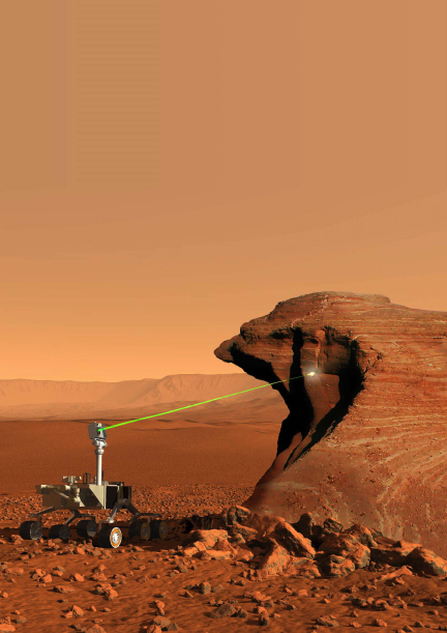MSL – Mission Objectives

Core Goals of the Mars Exploration Program:
- Determine whether Mars could ever have supported life
- Study the climate of Mars
- Study the geology of Mars
- Plan for a human mission to Mars
After Landing in August 2012, the Science Phase of the MSL Mission starts at the Gale Crater. This Phase is planned to last for at least one Mars Year (~2 Earth Years), but it can be extended based on vehicle performance.
The overall science goal for this mission is the exploration and quantitative assessment of a chosen region on Mars as potential habitat for life in the past, present and future.
Four primary science objectives will be addressed by the MSL Mission:
- Assess the biological potential for at least one targeted environment by studying the nature and inventory of organic constituents, searching for the basic chemical building blocks of life and examining features that have the potential of recording actions of biological processes.
- Characterize the geology of the Gale Crater at all appropriate spatial scales by conducting chemical, isotopic and mineralogical investigations to determine the composition of the Martian surface and near surface material. In addition to that, MSL interprets the processes that have formed rocks and other sediments.
- Investigate planetary processes that are relevant to habitability by assessing atmospheric evolution on a long time scale as well as determine the role of water and carbon dioxide cycles and their distribution at the present.
- Conducting an extensive investigation to evaluate a broad spectrum of radiation that is present on the surface including galactic cosmic rays, solar proton events and secondary neutrons.
Specific Objectives
Biological Objectives:
1. Determine the nature and inventory of organic carbon compounds
2. Inventory the chemical building blocks of life (carbon, hydrogen, nitrogen, oxygen, phosphorous, and sulfur)
3. Identify features that may represent the effects of biological processes
Geological and Geochemical Objectives:
4. Investigate the chemical, isotopic, and mineralogical composition of the martian surface and near-surface geological materials
5. Interpret the processes that have formed and modified rocks and soils
Planetary Process Objectives:
6. Assess long-timescale (i.e., 4-billion-year) atmospheric evolution processes
7. Determine present state, distribution, and cycling of water and carbon dioxide
Surface Radiation Objective:
8. Characterize the broad spectrum of surface radition, including galactic cosmic radiation, solar proton events, and secondary neutrons
